Experience Tranquility at Bohaishen Temple: Your Ultimate Travel Guide
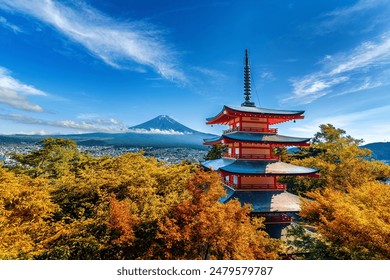
An Essential Guide to Visiting Bohaishen Temple
In This Guide
- An Essential Guide to Visiting Bohaishen Temple
- The Rich History and Legends of Bohaishen Temple
- Main Highlights: What You Absolutely Can’t Miss
- Planning Your Visit: A Practical Guide
- Tickets: Prices, Booking, and Tips
- How to Get There: A Complete Transportation Guide
- Local Cuisine and Accommodation Nearby
- Frequently Asked Questions
- Final Thoughts on Your Trip
Nestled along the windswept shores of the Bohai Sea, the Bohaishen Temple (渤海神庙) stands as a testament to the rich tapestry of Chinese history and maritime culture. This ancient temple, dedicated to the Sea God, is not just a place of worship; it is a historical landmark that captures the essence of the region’s spiritual and cultural heritage. For those venturing into the heart of Shanhaiguan, a visit to this temple offers a unique opportunity to explore the fusion of nature, mythology, and history.
A Glimpse into History
Dating back to the Ming Dynasty, the Bohaishen Temple was built to honor the Sea God, a deity believed to safeguard fishermen and sailors against the treacherous waters of the Bohai Sea. The temple’s architectural elegance, with its intricate carvings and traditional Chinese motifs, reflects the artistry of the period and serves as a reminder of the reverence ancient Chinese sailors held for the sea.
The Spiritual Significance
As you approach the temple, the tranquil ambiance envelops you, creating a stark contrast to the bustling tourist spots nearby. Visitors often find themselves drawn to the temple’s serene atmosphere, making it a perfect spot for reflection and meditation. The surrounding gardens, adorned with vibrant flora, enhance the spiritual experience, inviting travelers to pause and appreciate the beauty of nature intertwined with human devotion.
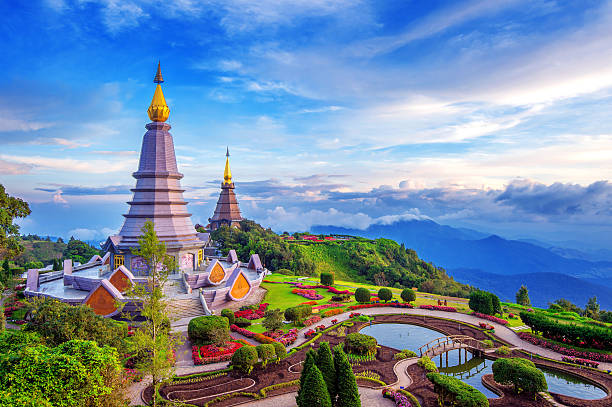
Bohaishen Temple.
Nearby Attractions
Located just a stone’s throw from other historical sites such as the Old Dragon Head (老龙头) and the famed Shanhaiguan Ancient City, Bohaishen Temple complements your exploration of the region. Whether you’re wandering through the ancient city walls or gazing out at the sea from the cliffs, each step deepens your understanding of the historical significance of this coastal area.
Culinary Delights
After your visit, indulge in local cuisine at nearby eateries, where you can savor dishes like the famous Sijiao Baozi (four-filled buns) or traditional dumplings, bringing a taste of Shanhaiguan to your culinary journey.
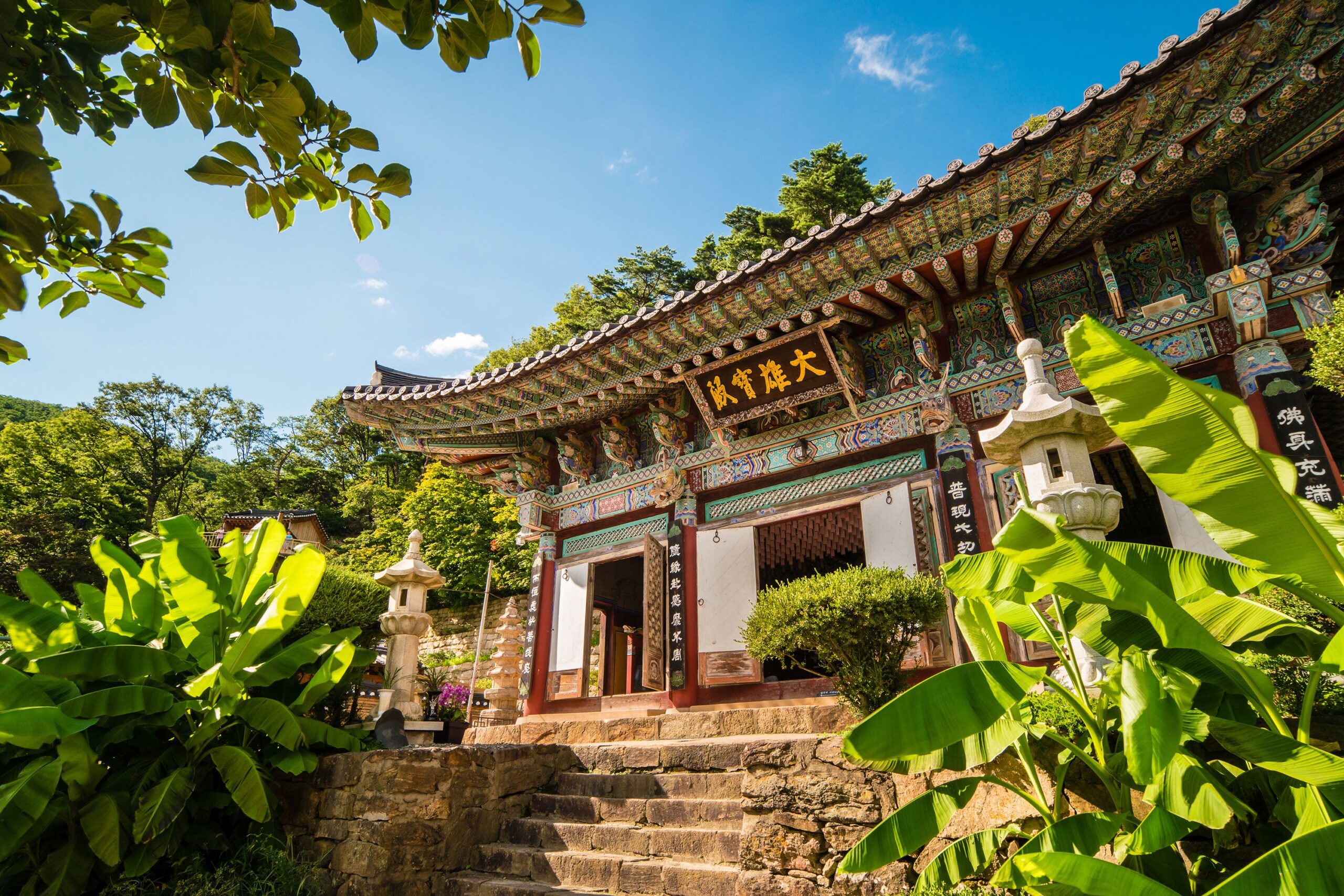
Bohaishen Temple.
In essence, the Bohaishen Temple is more than just a destination; it is an invitation to delve into the soul of Chinese maritime culture and spirituality. Whether you are a history buff, a cultural enthusiast, or simply seeking a moment of tranquility, this temple promises an enriching experience that lingers long after you leave its sacred grounds.
The Rich History and Legends of Bohaishen Temple
Nestled along the picturesque coastline of Bohai Bay, the Bohaishen Temple (渤海神庙) serves as a profound testament to the rich tapestry of Chinese history and culture. This temple is not merely an architectural wonder; it embodies centuries of devotion, legend, and the intricacies of maritime heritage.
Historical Significance
The Bohaishen Temple was originally constructed during the Ming Dynasty (1368-1644), a period marked by significant advancements in culture and commerce. It was built in honor of the Sea God, revered by fishermen and sailors who navigated the treacherous waters of the Bohai Sea. This temple, situated in Shanhaiguan, was strategically important as the gateway between the land and sea, linking the heartland of China with the maritime routes that facilitated trade and cultural exchange.

Bohaishen Temple.
Over the centuries, the temple has undergone various renovations and restorations, reflecting the changing dynasties and their respective architectural styles. The intricate carvings and the use of vibrant colors in the temple’s design are indicative of the artistic trends prevalent during the Ming and Qing Dynasties (1644-1912). This historical backdrop provides visitors with a glimpse into the spirituality and artistry that defined Chinese temple architecture.
Legends and Myths
The Tale of the Sea God
One of the most captivating legends surrounding Bohaishen Temple is that of the Sea God, known as “Bohai Shen.” According to local folklore, Bohai Shen was once a mortal fisherman who displayed extraordinary courage and skill. One fateful day, as he ventured into the depths of the sea, he encountered a ferocious storm. In his moment of peril, he prayed for deliverance, vowing to protect those who ventured into the sea. Miraculously, the storm subsided, and he emerged unscathed. In gratitude, the gods transformed him into the Sea God, granting him the power to safeguard sailors and fishermen.
This legend underscores the reverence that local communities have for their deities, who embody the unpredictability of the sea. Fishermen often visit the temple to offer sacrifices and seek blessings before embarking on their journeys, hoping to ensure safe passage through the waters.
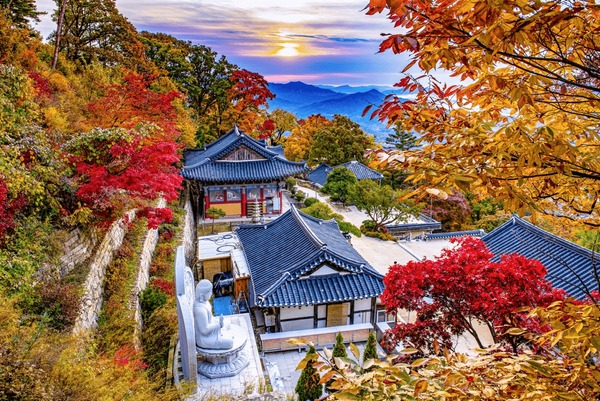
Bohaishen Temple.
The Guardian of the Fishermen
Another popular legend tells of a fierce sea monster that threatened the livelihoods of local fishermen. As boats disappeared and catches dwindled, despair settled over the coastal villages. In response, the community gathered at the Bohaishen Temple, praying for guidance and protection. The Sea God, heeding their pleas, emerged from the depths and vanquished the monster, restoring peace to the waters. This event not only solidified the temple’s importance as a spiritual haven but also reinforced the bond between the Sea God and the local fishing community.
Architectural Marvel
The architectural features of Bohaishen Temple are as compelling as the legends that surround it. The temple complex boasts traditional Chinese architectural elements, including intricate roof designs adorned with dragon motifs, vibrant frescoes depicting mythological scenes, and well-preserved stone carvings that narrate tales of valor and devotion. The main hall, dedicated to Bohai Shen, is a focal point of worship and pilgrimage, where visitors can witness the blend of spirituality and artistry that characterizes Chinese temples.
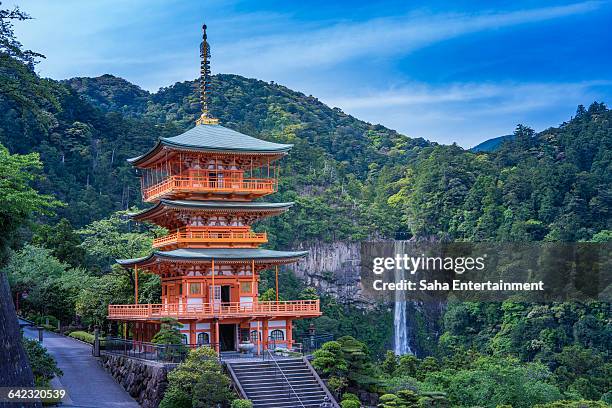
Bohaishen Temple.
Modern Relevance
Today, Bohaishen Temple stands not only as a historical monument but also as a vital cultural site that continues to attract visitors from around the world. It serves as a reminder of the enduring relationship between people and the sea, a bond that has shaped the lives and cultures of coastal communities throughout history. The temple is a vibrant hub for festivals and rituals, where locals and tourists alike can participate in traditional ceremonies, offering a unique opportunity to experience the living culture of the region.
In summary, the Bohaishen Temple is more than a historical site; it is a narrative woven through time, encapsulating the legends, beliefs, and artistry of Chinese culture. A visit to this sacred place is an invitation to engage with the rich history and enduring traditions that continue to thrive along the shores of Bohai Bay.
Main Highlights: What You Absolutely Can’t Miss
Bohaishen Temple (渤海神庙) is a remarkable site steeped in history and cultural significance, making it a must-visit destination for travelers interested in Chinese heritage. Nestled in the picturesque city of Qinhuangdao, this temple serves as both a spiritual sanctuary and a historical landmark. Here are the main highlights that you absolutely cannot miss when visiting Bohaishen Temple.
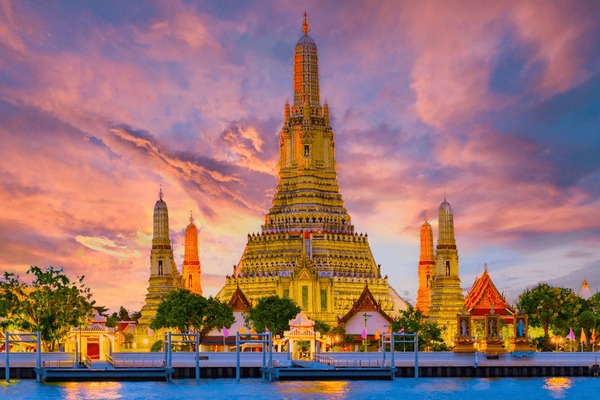
Bohaishen Temple.
1. Architectural Marvels
The Bohaishen Temple is renowned for its stunning architecture, showcasing traditional Chinese design principles. Visitors will be captivated by the intricate carvings, vibrant colors, and elegant layout of the temple complex. The main hall, dedicated to the sea god, features beautifully painted beams and ornate decorations that reflect the craftsmanship of ancient artisans.
2. Historical Significance
Originally built during the Tang Dynasty, the temple has been a place of worship and cultural exchange for centuries. It served as a vital religious site for sailors and fishermen who sought blessings for safe voyages and bountiful catches. The temple’s rich history is reflected in its architecture and the numerous inscriptions found within the complex, making it an invaluable site for those interested in Chinese history.
3. Cultural Activities
Visitors to Bohaishen Temple can engage in various cultural activities that enhance their experience. Participate in traditional rituals, such as incense burning and prayer offerings, to connect with the spiritual atmosphere of the temple. Additionally, the temple often hosts cultural festivals and performances that showcase local traditions, providing a unique opportunity to immerse yourself in the local culture.

Bohaishen Temple.
4. Scenic Surroundings
The temple is beautifully situated along the coast of the Bohai Sea, offering breathtaking views of the surrounding landscapes. Take a leisurely stroll around the temple grounds to appreciate the natural beauty that envelops this sacred site. The peaceful ambiance, combined with the sound of waves lapping against the shore, creates an ideal setting for reflection and relaxation.
5. Nearby Attractions
Combine your visit to Bohaishen Temple with other nearby attractions to make the most of your trip. Just a short distance away, you’ll find the iconic Laolongtou (Old Dragon Head), the eastern terminus of the Great Wall, where it meets the sea. The juxtaposition of the ancient wall and the ocean is a stunning sight that captures the essence of China’s rich history.
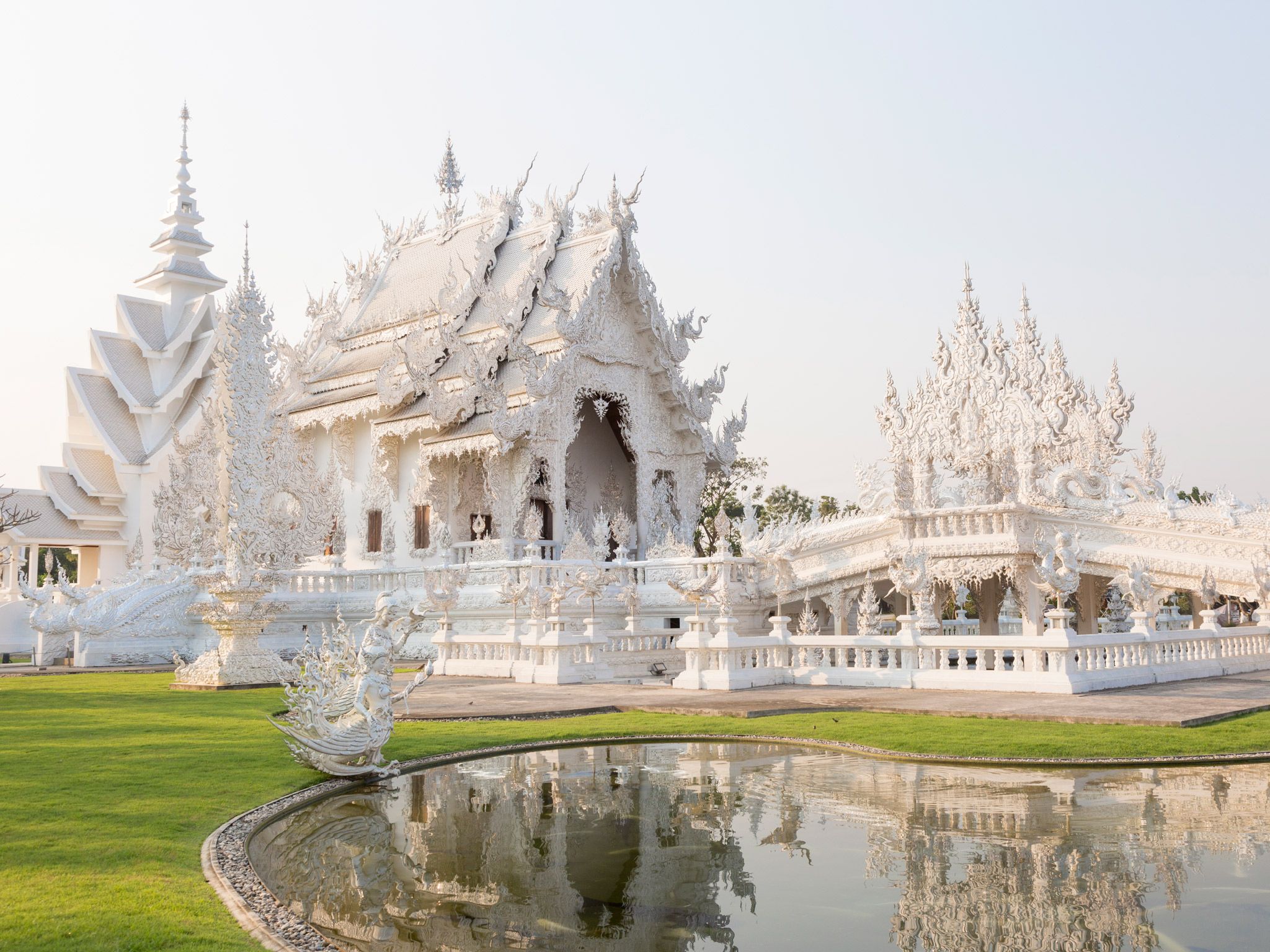
Bohaishen Temple.
6. Local Cuisine
No visit to Bohaishen Temple is complete without indulging in the local cuisine. Nearby, you’ll discover an array of eateries serving fresh seafood and traditional dishes. Be sure to try the famous steamed buns and dumplings, which are local favorites. Enjoying these culinary delights while soaking in the temple’s atmosphere will surely enhance your experience.
7. Spiritual Insights
For those seeking a deeper understanding of Chinese spirituality, the Bohaishen Temple offers insights into the local belief systems. The temple is dedicated to the sea god, who is revered for his protection over sailors and fishermen. Engaging with the temple’s monks or local practitioners can provide valuable perspectives on the integration of spirituality and daily life in China.

Bohaishen Temple.
Conclusion
A visit to Bohaishen Temple is not just a journey to a historical site; it’s an exploration of the rich tapestry of Chinese culture, spirituality, and history. Whether you are drawn by the architectural beauty, the cultural significance, or the serene coastal views, this temple is an unforgettable highlight of any trip to Qinhuangdao. Make sure to set aside ample time to fully immerse yourself in this captivating destination.
Planning Your Visit: A Practical Guide
Essential Information for Visiting Bohaishen Temple
Visiting Bohaishen Temple (渤海神庙) offers an enriching experience steeped in Chinese history and culture. To ensure your trip is smooth and enjoyable, this guide provides you with all the practical details you need.
Getting There
Location: Bohaishen Temple is situated in the scenic coastal area of Qinhuangdao, Hebei Province, renowned for its historical significance and beautiful landscapes.
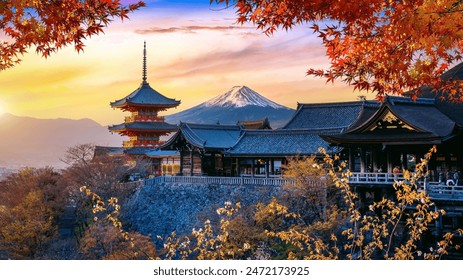
Bohaishen Temple.
Transportation Options:
– By Train: High-speed trains connect major cities to Qinhuangdao. The journey from Beijing takes about 2.5 hours, while from Tianjin, it’s roughly 1.5 hours. Opt for regular trains if you seek a more cost-effective option.
– By Bus: There are numerous long-distance buses from Beijing and Tianjin to Qinhuangdao. Buses depart frequently, ensuring convenient access.
– Local Transport: Upon arrival in Qinhuangdao, taxis and local buses are readily available. For a more immersive experience, consider renting a bicycle to explore the local area.
Best Time to Visit
The ideal time to visit Bohaishen Temple is during the spring (April to June) and autumn (September to October) months. During these seasons, the weather is mild, making it perfect for sightseeing. Summer can be hot and humid, while winter temperatures may drop significantly, affecting travel plans.

Bohaishen Temple.
Admission Details
- Entrance Fee: The temple typically does not charge an admission fee, allowing visitors to appreciate its architectural beauty and cultural significance without financial burden.
- Opening Hours: The temple is generally open from 8:00 AM to 6:00 PM. It’s advisable to visit early to avoid crowds and fully immerse yourself in the tranquil atmosphere.
Accommodation Options
For an overnight stay, consider accommodations in the nearby Qinhuangdao city center, where you’ll find a range of options, from budget hotels to luxurious resorts. Recommended hotels include:
– 7 Days Inn: A budget-friendly option located near the train station.
– Hilton Qinhuangdao: For those seeking comfort and amenities with stunning sea views.

Bohaishen Temple.
Exploring the Area
Nearby Attractions:
– Laolongtou (老龙头): Just a short distance from Bohaishen Temple, this site marks the eastern starting point of the Great Wall, offering breathtaking coastal views and historical insights.
– Shanhaiguan Fortress (山海关): A UNESCO World Heritage site, this fortress is known as the “First Pass Under Heaven” and is a must-visit for history enthusiasts.
– Meng Jiangnu Temple (孟姜女庙): Dedicated to the legend of Meng Jiangnu, this temple is a poignant reminder of love and sacrifice, enriching your cultural experience.
Local Cuisine
While in the area, don’t miss out on local delicacies:
– Baozi (包子): Steamed buns filled with various ingredients; try the famous “Four Strands” baozi in the ancient city.
– Dumplings (饺子): Renowned for their flavor and variety, these are a staple in Chinese cuisine.
– Seafood: Being a coastal city, Qinhuangdao offers fresh seafood options, particularly in local markets and restaurants.
Travel Tips
- Language: While Mandarin is the official language, learning a few basic phrases can enhance your experience and interactions with locals.
- Cash and Payments: Although credit cards are accepted in many places, it’s wise to carry some cash, especially in smaller shops and markets.
- Respect Local Customs: When visiting temples, dress modestly and be respectful of the rituals and practices observed there.
In conclusion, a visit to Bohaishen Temple is not just a journey into history but also an opportunity to experience the beauty and richness of Chinese culture. With this practical guide, you’re well-prepared to explore this fascinating destination. Enjoy your travels!
Tickets: Prices, Booking, and Tips
Visiting Bohaishen Temple (渤海神庙) offers a unique glimpse into the rich tapestry of Chinese history and culture. To make the most of your journey, here’s a comprehensive guide on ticketing, prices, booking options, and some handy tips for international travelers.
Ticket Prices
- General Admission: The entrance fee for Bohaishen Temple is approximately 60 RMB for adults and 40 RMB for children. This allows access to the main temple complex and its surrounding areas.
- Discounts: It’s advisable to check for any available discounts for students, seniors, and group bookings. Many tourist sites in China offer reduced prices for these groups.
Booking Information
- Online Booking: Tickets can often be purchased online through various travel websites such as Trip.com or directly through the temple’s official website. Booking in advance is recommended, especially during peak tourist seasons.
- On-Site Purchase: Tickets can also be bought at the entrance. However, during busy periods, this might involve waiting in line, so arriving early can save you time.
Visiting Hours
- Opening Times: Bohaishen Temple typically opens from 8:00 AM to 6:00 PM. It’s best to arrive early in the day to enjoy a quieter experience and explore the temple without the crowds.
- Best Time to Visit: Spring (April to June) and autumn (September to November) are ideal due to milder weather and vibrant scenery, making your visit more enjoyable.
Travel Tips
- Transportation: If you’re traveling from nearby cities such as Qinhuangdao, high-speed trains can get you to Bohaishen Temple efficiently. Ensure you check the train schedules and book tickets in advance, especially during holidays.
- Local Amenities: The area around the temple has several restaurants and cafes where you can sample local cuisine. Don’t miss out on trying the famous Si Tiao Baozi (steamed buns) and San Tiao Jiaozi (dumplings) for an authentic taste of the region.
- Cultural Etiquette: As with many religious sites in China, it’s important to be respectful. Dress modestly and maintain a quiet demeanor while exploring the temple grounds. Photography may be restricted in certain areas, so always check for signs or ask staff before snapping pictures.
- Guided Tours: Consider joining a guided tour if you wish to learn in-depth about the history and significance of the temple. Many tours offer insights that enhance your understanding of the cultural context.
Final Thoughts
Planning your visit to Bohaishen Temple can significantly enhance your experience. By securing tickets in advance, choosing the right time to visit, and embracing local customs, you’ll find yourself immersed in the serene beauty and historical significance of this remarkable site. Enjoy your journey into the heart of Chinese culture!
How to Get There: A Complete Transportation Guide
To visit Bohaishen Temple, a site rich in history and cultural significance, you’ll need a solid transportation plan to navigate your journey to this remarkable temple situated in Shanhaiguan, part of Qinhuangdao City. Below is a comprehensive guide to help ensure a smooth trip.
Getting to Qinhuangdao
From Major Cities:
- Beijing:
- By Train: High-speed trains (G trains) leave from Beijing South Railway Station to Qinhuangdao Station. The journey takes about 2.5 to 3 hours. Tickets typically range from RMB 120 to RMB 200.
-
By Bus: Long-distance buses are available from various bus stations in Beijing, taking approximately 4 to 5 hours.
-
Tianjin:
- By Train: High-speed trains from Tianjin to Qinhuangdao take around 1.5 to 2 hours.
- By Bus: Buses also operate between these cities, with a journey time of about 3 to 4 hours.
Getting to Bohaishen Temple
Once in Qinhuangdao, Bohaishen Temple is conveniently located near Shanhaiguan, which is known for its significant historical sites.
- Public Transportation:
- By Bus: Local buses, such as the 25 and 13 routes, can take you directly to the vicinity of Bohaishen Temple. Make sure to check the local bus schedule for the most current information.
-
By Taxi: Taxis are a convenient option and can be flagged down easily. The fare from Qinhuangdao city center to Bohaishen Temple should typically cost around RMB 30-50, depending on traffic.
-
Walking:
-
If you’re staying in Shanhaiguan, the temple is within walking distance from the ancient city and other attractions like Laolongtou (Old Dragon Head). A pleasant stroll through this historic area can enhance your experience.
-
Bicycles:
- Renting a bicycle is another enjoyable way to explore the area. Many hotels offer bike rentals, and cycling along the coastal paths can be a refreshing way to reach the temple.
Additional Tips
-
Accommodation: Staying in a hotel near Shanhaiguan will not only make your trip to Bohaishen Temple easier but also allow you to explore other nearby attractions such as the Great Wall at Shanhaiguan and the scenic coastal areas.
-
Travel Apps: Download local transportation apps (like Didi for taxis) and navigation tools to help you get around effortlessly.
-
Local Knowledge: Engaging with locals can provide insights into the best routes and transportation options. The residents are often very friendly and willing to assist travelers.
By following this transportation guide, you’ll be well-prepared to visit Bohaishen Temple and immerse yourself in the rich tapestry of Chinese history and culture that surrounds this remarkable site. Enjoy your journey!
Local Cuisine and Accommodation Nearby
When visiting the historic Bohaishen Temple (渤海神庙) in the scenic area of Shanhaiguan, you’ll find a delightful fusion of local cuisine and comfortable accommodations nearby that enhance your cultural experience.
Local Cuisine
Exploring the culinary landscape around Bohaishen Temple is a must for any traveler. Here are some local delicacies that you should definitely try:
- Sijiao Baozi (四条包子): These steamed buns are a local favorite, known for their fluffy dough and savory fillings. They are perfect for a quick snack as you explore the area.
- Sanjiao Jiaozi (三条饺子): Dumplings filled with various ingredients, these are often served with a tangy dipping sauce. They make for a hearty meal after a day of sightseeing.
- Seafood Specialties: Given Shanhaiguan’s coastal proximity, indulge in fresh seafood dishes at nearby restaurants. Yecunli Seafood Restaurant is particularly famous for its crab and shrimp dishes.
For a casual dining experience, you can visit Sijiao Baozi shop right across from your hotel for a quick and satisfying meal.
Accommodation
Finding a comfortable place to stay near Bohaishen Temple is essential for enjoying your trip. Here are some recommended options:
- 7 Days Inn: This budget-friendly hotel is conveniently located a short walk from the temple and the ancient city. It offers clean rooms and basic amenities, making it an excellent choice for those who prioritize convenience and affordability.
- Qinhuangdao Marriott Resort & Spa: For travelers seeking a more luxurious experience, this resort provides stunning views of the Bohai Sea and top-notch services, including a spa and excellent dining options.
- Hanting Express: Another economical choice, this hotel is known for its comfortable rooms and proximity to local attractions. It’s an ideal spot for families and solo travelers alike.
Conclusion
With a rich array of local dishes to savor and a variety of accommodations to choose from, your visit to Bohaishen Temple will not only be a journey through history but also a delightful culinary adventure. Enjoy the flavors of Shanhaiguan while soaking in its beautiful surroundings!
Frequently Asked Questions
Frequently Asked Questions about Bohaishen Temple (渤海神庙)
- What is Bohaishen Temple known for?
-
Bohaishen Temple, located in the coastal city of Qinhuangdao, is renowned for its rich history and cultural significance as a site of worship dedicated to the sea god. It is a remarkable example of ancient Chinese architecture and religious practice, attracting visitors interested in history and spirituality.
-
How do I get to Bohaishen Temple?
-
The temple is easily accessible from the city center of Qinhuangdao. You can take a local bus or use a taxi to reach the temple. If you’re near the Shanhaiguan railway station, it’s just a short distance away, making it convenient for travelers.
-
What are the opening hours of Bohaishen Temple?
-
Bohaishen Temple is typically open to visitors from 8:00 AM to 6:00 PM. However, it’s advisable to check for any seasonal changes in operating hours before your visit.
-
Is there an admission fee to visit the temple?
-
Yes, there is an entrance fee to visit Bohaishen Temple. The ticket price is usually around 60 RMB for adults, while children and seniors may enjoy discounted rates. Keep some cash handy as payment options may vary.
-
What should I wear when visiting the temple?
-
Visitors are encouraged to dress modestly and respectfully when visiting Bohaishen Temple. Comfortable walking shoes are recommended, as you will likely be exploring the temple grounds and surrounding areas.
-
Are there any guided tours available?
-
Yes, guided tours are available for those who want to learn more about the history and significance of Bohaishen Temple. These tours often include insights into local legends and the temple’s architectural features, providing a richer experience.
-
What other attractions are near Bohaishen Temple?
-
The temple is located close to other historical sites, including the Shanhaiguan Ancient City and Laolongtou (Old Dragon Head), which is known as the eastern terminus of the Great Wall of China. These sites can easily be included in a day trip.
-
Can I take photos inside the temple?
- Photography is generally permitted in most areas of Bohaishen Temple, but be sure to respect any signs indicating restricted zones, particularly within prayer halls or areas where worship is taking place. Always check with temple staff if you’re unsure.
Final Thoughts on Your Trip
As your journey through the historical and cultural treasures of Bohaishen Temple and its surrounding attractions comes to a close, it’s time to reflect on the richness of your experience. This sacred site, steeped in tales of ancient China, offers more than just a glimpse into the spiritual life of the past; it invites you to connect with the very essence of Chinese heritage.
Embrace the Legacy
While visiting Bohaishen Temple, you’ve walked in the footsteps of those who came before you—worshippers seeking solace and enlightenment. The intricate architecture and serene surroundings echo the wisdom of centuries, reminding us that spirituality transcends time and space. Pause for a moment to absorb the tranquility around you; it’s a rare opportunity to find peace in a world that often feels hurried.
Explore Surrounding Wonders
Your adventure doesn’t have to end here. The nearby attractions, such as the majestic Laolongtou (Old Dragon Head) and the historic Shanhaiguan, are a testament to the region’s strategic significance and stunning natural beauty. Make sure to explore the ancient city walls and marvel at the panoramic views, where the Great Wall meets the sea. These sites not only enhance your understanding of Chinese military history but also provide a breathtaking backdrop for unforgettable photographs.
Savor Local Flavors
And don’t forget to indulge in the local culinary delights! Sample the famous baozi (steamed buns) or jiaozi (dumplings) from the bustling eateries nearby. Each bite is a delicious connection to the local culture, a reminder that food is a universal language that brings people together.
Final Thoughts
In conclusion, your visit to Bohaishen Temple and its surrounding marvels is not merely a trip; it’s an exploration of a vibrant tapestry of history, culture, and spirituality. As you prepare to leave, carry with you the stories and experiences that have enriched your journey. Allow these memories to inspire you, fostering a deeper appreciation for the beauty of Chinese culture and its enduring legacy.
May your travels continue to be filled with discovery and wonder. Safe travels!